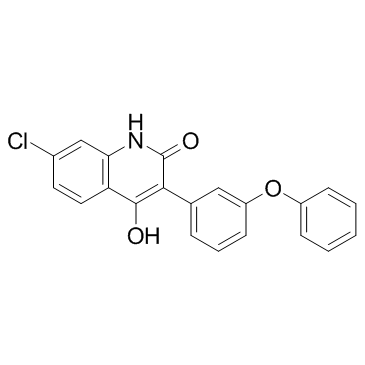Lowered brain stimulation reward thresholds in rats treated with a combination of caffeine and N-methyl-D-aspartate but not alpha-amino-3-hydroxy-5-methyl-4-isoxazole propionate or metabotropic glutamate receptor-5 receptor antagonists.
Anton Bespalov, Olga Dravolina, Irina Belozertseva, Bartosz Adamcio, Edwin Zvartau
文献索引:Behav. Pharmacol. 17(4) , 295-302, (2006)
全文:HTML全文
摘要
Previous studies suggested that adenosine A1 and A2A receptor agonists counteract behavioral effects of N-methyl-D-aspartate (NMDA) receptor antagonists while adenosine receptor antagonists may produce opposite effects enhancing the actions of NMDA receptor antagonists. To further evaluate the effects of combined administration of adenosine receptor antagonist caffeine and various NMDA and non-NMDA glutamate receptor antagonists on brain stimulation reward (discrete-trial threshold current intensity titration procedure), rats with electrodes implanted into the ventral tegmental area were tested after pretreatment with NMDA receptor channel blocker MK-801 (0.01-0.3 mg/kg), competitive antagonist D-CPPene (0.3-5.6 mg/kg), glycine site antagonist L-701,324 (1.25-5 mg/kg), alpha-amino-3-hydroxy-5-methyl-4-isoxazole propionate (AMPA) receptor antagonist GYKI-53655 (1-10 mg/kg), metabotropic glutamate receptor 5 (mGluR5) antagonist MPEP (1-10 mg/kg) alone and in combination with caffeine (1-30 mg/kg). MK-801 (0.056 and 0.1 mg/kg) was the only tested glutamate antagonist that lowered self-stimulation thresholds, while D-CPPene (5.6 mg/kg) and MPEP (5.6 and 10 mg/kg) had the opposite effects. Threshold-increasing effects of D-CPPene, but not of MPEP, however, were associated with marked impairment of operant performance, reflected by longer latencies to respond and higher rates of responding during the inter-trial intervals. Operant performance was also disrupted by the highest dose of MK-801 (0.3 mg/kg). For subsequent experiments, caffeine (1-30 mg/kg) was combined with the highest doses of NMDA receptor antagonists that did not lower the brain stimulation reward thresholds and did not impair operant performance. Caffeine had no appreciable effects on self-stimulation behavior when given alone. A low dose of caffeine (3 mg/kg) significantly lowered self-stimulation thresholds only when given together with MK-801 (0.03 mg/kg) or D-CPPene (3 mg/kg). Combined with the same antagonist drugs, higher doses of caffeine (10 and 30 mg/kg) facilitated time-out responding. These results indicate that, within a limited dose range, caffeine in combination with an NMDA receptor channel blocker and a competitive antagonist significantly lowers brain stimulation reward thresholds in rats.
相关化合物
| 结构式 | 名称/CAS号 | 分子式 | 全部文献 |
|---|---|---|---|
 |
L-701324
CAS:142326-59-8 |
C21H14ClNO3 |
|
NMDA/glutamate mechanism of magnesium-induced anxiolytic-lik...
2008-01-01 [Pharmacol. Rep. 60(5) , 655-63, (2008)] |
|
NMDA/glutamate mechanism of antidepressant-like action of ma...
2007-12-01 [Pharmacol. Biochem. Behav. 88(2) , 158-64, (2007)] |
|
Activation of the NMDA/glutamate receptor complex antagonize...
2007-01-01 [Pharmacol. Rep. 59(5) , 595-600, (2007)] |
|
Are glycineB sites involved in the development of morphine t...
2004-01-01 [Pol. J. Pharmacol. 56(1) , 51-7, (2004)] |
|
An examination of NMDA receptor contribution to conditioned ...
2011-01-01 [Psychopharmacology 213 , 131-141, (2011)] |